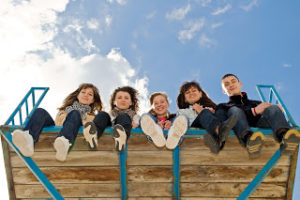
In the literature of Developmental Psychology, adolescence is considered as the second most drastic period of individuation; after the “toddlerhood” and before the “midlife crisis”. Parents of children roughly between the ages of 10-15 notice sooner or later that there was a golden decade of peace, love, and understanding that is common in the early years of parent-child relationship. They come to realize that the little sweet girl or boy that they once had has become a moody door slammer, who seeks refuge in her/his room, in music or in friends. In her book My Teenage Werewolf, Lauren Kessler says, “ I am in mourning for the old days, not the days of diapers but the days of being part of everything they did, of calming their fears and taking away their hurts, of teaching them to read and ride bikes, to swim, to dance”. Many parents experience a sense of grief for the loss of the “little child”, as well as for the loss of their all-influential role in the life of their children.
This is the situation for many parents whose children reach puberty. I think the first thing that parents need to do is to allow themselves to “mourn for the old days” and at the same time to realize that this is a transitional time where family members’ roles need adjustments.
What happens during early adolescence that shakes the family structure so profoundly? Last year I attended a seminar and the speaker started her presentation with this question: “Has anyone seen something more obnoxious than a 7th grade girl”? The question was answered with a loud laughter from the audience. The rest of the talk was about the brain development during adolescence. We are all aware of the physical and hormonal changes and their outcomes during this phase of life. However, the story is more complex than that. Recent neuro-scientific studies shed light on our understanding of adolescents’ behaviors that often puzzle us adults. The researchers explain this with the development of brain parts; the front part of the brain, the frontal lobes is the seat of rational decision-making, emotional and impulse control, and moral reasoning. As Kessler puts it, this is the “cop” part of the brain that would stop a person from talking back, lashing out, slamming doors and so on. The bad news is that the frontal lobes are the last part of the brain to reach maturity, often not until the early twenties. I do not suggest here that parents should excuse all rude, disrespectful, disruptive behaviors because of the discoveries in neuroscience, however, this information helps us understand how “teen’s brain” function and put things in perspective.
Beside the brain development, adolescence is a time of massive changes. In search of their identity, teens become more and more distant from their parents, both physically and emotionally. They prefer to spend time with peers or alone, rather than with families. Their relationship with peers provides them with a miniature community in which they “rehearse” various roles and identities. With this regard, it is essential for teens to have this opportunity. Many parents fall into the trap of taking this “distance” personally and as rejection. We need to keep in mind that this separation, displaying itself as a strong preference for peers and privacy, serves a developmental need in becoming a healthy, independent adult.
Risk-taking is another major behavior change that one can observe in adolescents. Young people are naturally very curious about life and that curiosity shows itself in experimenting “adult-only” activities (alcohol, smoking, sex etc.) Risk-taking and experimenting are both normal and frightening and one study shows that periodic acting-out behavior during adolescence –as long as the child is not diagnosed with Oppositional Defiant Disorder- may actually reflect a normal, healthy adolescent personality. (Phelan, 1998) As parents, we need to realize that experimentation is normal while at the same time trying to discourage its dangerous forms.
Another important characteristic of young adolescents is self-consciousness. Self-consciousness always goes hand in hand with egocentricity, which translates into a “13 year old girl spending hours in front of a mirror before going out”. The adolescent feels like the whole world is watching and everything revolves around him/her. That also brings a huge fear of failure and sensitivity for being criticized. It is important for parents to empathize with their teen’s self-consciousness and take the time to remember their own teenage years.
The purpose of this post is to give parents a brief account of what they might observe in their pubescent/young adolescent child. Of course, there is a variation among teens and not all teens follow the script. No matter where they are in the spectrum, parents should expect to face some challenges. It is not unusual to feel discouraged, however, bearing in mind that children/teens are “work in progress” may bring a sense of peace. Our primary role as adults, during this phase of “rebirth”- as Richard Frankel puts it- is to guide them without being too intrusive.
